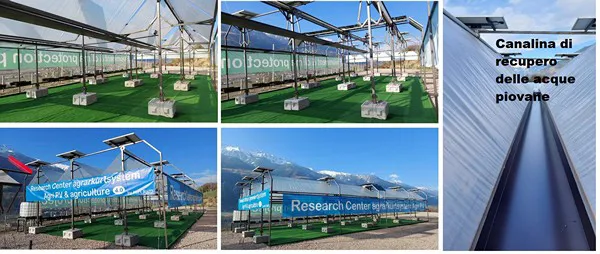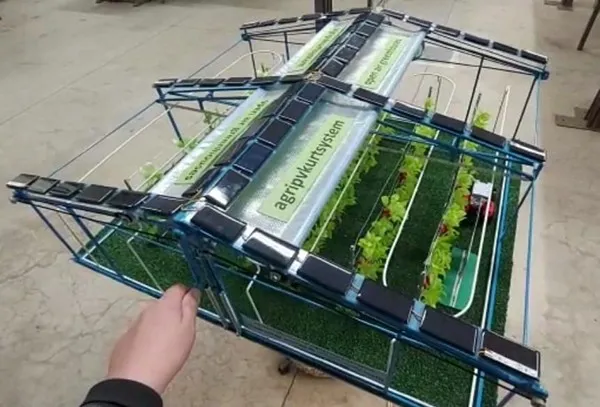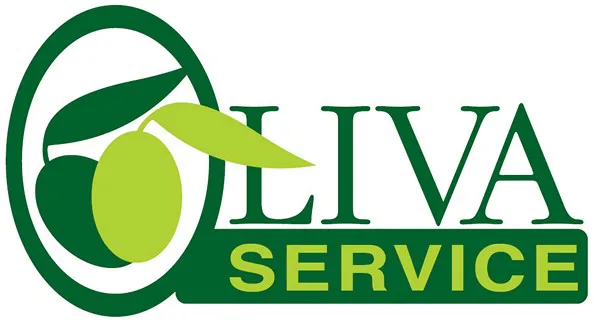Agri-voltaic systems form part of those systems that produce renewable energy and are the most suitable to quickly reach the European objectives of 50% renewable energy and energy independence by 2030. This need is made necessary by the war in Ukraine and the subsequent increase in gas prices. In addition to offering large areas to produce photovoltaic energy and green hydrogen, agri-voltaic systems enable, in fact, the production of food and land cultivation.
FreshPlaza has talked about it with Angelo Amato, sales and communication manager at the Agrarkurtsystem research center by Kurt Raffl. "For agricultural businesses, there has never been a similar occasion of supplementary income. An agro-voltaic system covering one hectare can produce an annual income exceeding €100,000. This is not comparable with annual land leases, which are well below €3,000 a year per hectare in the south of the country."

"Many banks, observing the great interest from the government (Draghi-Meloni), are getting organized to support the financing of these systems as they guarantee a certain strategic income for Europe."
Some agri-voltaic systems can also meet another need that has emerged over the past few years, i.e. that of tackling climate change which has brought about droughts and led to extensive damage to crops caused by hail, flash floods, or scorching sunshine. The Agrarkurtsystem research center by Kurt Raffl designs and prototypes systems for the protection of plants against climate change and operative solutions for agricultural work and processing. A system of wind and hail-resistant films that opens and closes when bad weather approaches. An innovative solar panel system is installed on top of the films that pursues the sun and maximizes the energy produced.
"After setting up the first pilot system in Naturno (Bolzano), the research center is in touch with some Italian universities to develop a scientific collaboration and open a facility in Lecce to produce a second innovative system, i.e. open-air greenhouses. A new automated, digital, and robotic technology that could attract the younger generations to the agricultural world." Below are the main advantages:

- Unique greenhouse opening and closing system to improve ventilation and internal humidity, which often causes the proliferation of pathogens (fungi);
- Protection against bad weather (hail, heavy rain, drought, etc.);
- Reduction of the drift effect (dispersal of chemical products in the environment) during the distribution of products used for phytosanitary defense;
- Protection films made with winding photovoltaic films ideal for crops, nurseries, officinal plants, hydroponic crops, as well as medium and tall fruit plants to maximize the production of solar energy;
- Collection and storage of rainwater, filtering and reuse;
- Reduction of water evaporation phenomena from the soil thanks to the film opening and closing system;
- Robot system with sliding rails and universal machine hooking system for crop operations (fertilization, irrigation, phytosanitary treatments, pruning, harvesting with assessment of the ripening level, etc.) with a considerable reduction of the environmental impact and agronomic management costs;
- Production of electricity to recharge innovative agricultural vehicles;
- Production of green hydrogen for the creation of refuelling areas for industrial and agricultural vehicles;
- Desalination and distillation of water for the protected and organic cultivation of vegetables in desert and cold areas.
The research center is in contact with investors who want to take part in the industrial development of the system.
 For further information:
For further information:
Angelo Amato
Oliva Service
Via Perugia, 7 - 73100 Lecce
Tel.: +39 0832/391652
Tel.: +39 348/7849932
[email protected]
www.olivaservice.it
